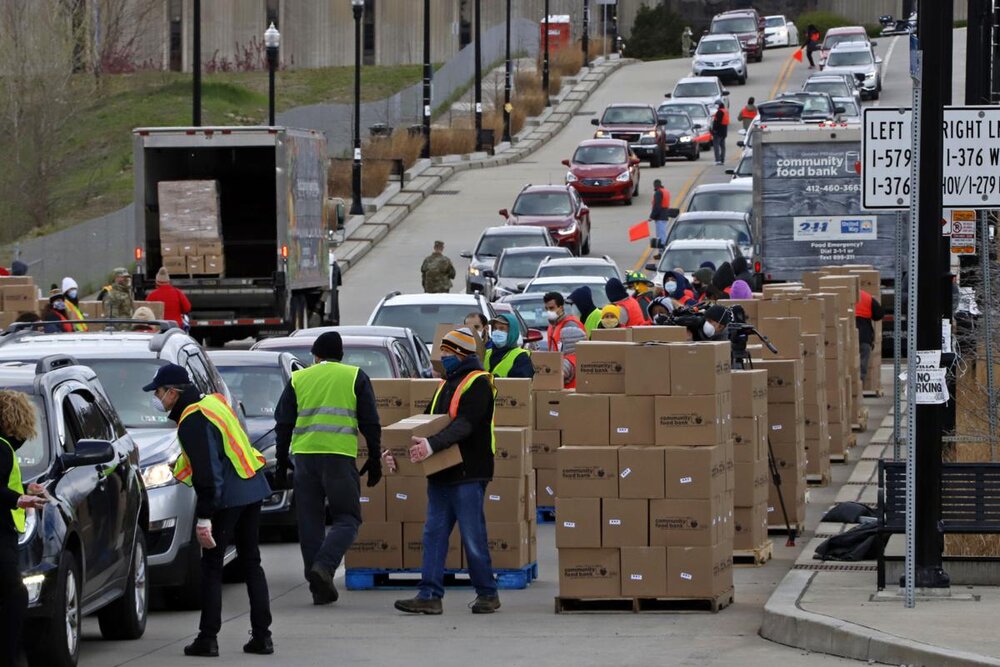Hunger on the rise in corporate America

TEHRAN- It did not take so long for the novel virus, or COVID-19, to send the entire world reeling. The full-scale economic aftermaths of the deadly pandemic are yet to emerge as the debris is too smoky for a calm, realistic appraisal.
But one thing is for sure. The toll the lockdown is taking on the world’s flagship economy, the U.S.’s, is overwhelming and painful, rendering any prospect of a fast bounce-back slim and bleak.
It has ushered in a torrent of unemployment filings and a waiver of hunger, “the like of which has never been seen before”. Only in the past three weeks, more than 16 million Americans have lost their jobs. The unprecedented job loss will drag on spending, which explains up to 70% of the country’s economic growth.
Despite the dire economic situation, long grocery lines do not seem to get shorter or go away. A sad reminder of a consumerist culture exacerbated by an authority that is failing to retain the public’s trust due to misinformation about and inappropriate response to the disaster.
Among others, the outbreak has contributed to the unmasking of the corporate world, wherein grocery stores and gun shops are “essential” businesses in equal measures at times of hardship such as a pandemic.
For the haves who access survival resources, guns are of course needed for maximum protection in a country that always brags about abundance and security and presents itself as the envy of the world.
For the have-nots, the story has a dramatic twist to it. They have neither food nor guns and that’s why they scramble to food banks.
It seems that the coronavirus is not the only invisible enemy hitting the U.S. hard these days. So is the hunger.
One piece of evidence for this is a drone footage of a miles-long line of cars waiting for food last week in the Monongahela River leading to the Greater Pittsburgh Community Food Bank.
In the second piece of evidence, one food bank in Omaha, Food Bank of the Heartland, saw a nine-fold increase in its typical monthly purchases, according to a New York Times report.
The flocking to food banks and pantries was not unexpected in a country with a nation-wide anti-hunger program, known as SNAP, that helped 40 million low-income Americans afford a nutritionally adequate diet only in one month in 2018.
With the number of American hungers being nearly as half as Iran’s population, no one in Iran would buy into the U.S. Secretary of State Mike Pompeo who said this past September Iran's leaders needed to return to the table for talks "if they want their people to eat."
We Iranians call it, the pot calling the kettle black.
Leave a Comment